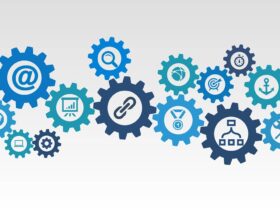Operational Technology (OT) and Information Technology (IT) are two domains in the world of technology that are intertwined on some levels. They serve different purposes, however, and have other management and implementation approaches.
When it comes to OT vs IT, they share a common requirement which is the need for adequate cybersecurity monitoring to flag vulnerabilities and any potential cyber-attack vectors.
Differentiating between Operational Technology and Information Technology
In industrial and manufacturing settings, OT refers to the equipment and applications that track and control tangible objects and procedures. System types interacting directly with tangible equipment and procedures include industrial control systems, supervisory control and data acquisition, programmable logic controllers, sensors, and other technologies.
On the other hand, IT utilizes computerized systems to store, retrieve, transmit, and manipulate data. It manages information and supports business processes. These business processes include applications, databases, networking, servers, and end-user computing devices.
These differences can be granulated further into the following sub-categories:
Technology Infrastructure
The nature of OT infrastructure is often specialized, proprietary, and designed for real-time control and monitoring of physical processes. Legacy systems are commonly utilized in OT environments, emphasizing reliability, safety, and availability.
IT infrastructure is typically more standardized and consists of general-purpose computing technologies like servers, desktop computers, laptops, cloud services, and open software platforms.
Network Architecture
OT network infrastructures are usually isolated to ensure security and reliability. These devices are often connected through industrial protocols and may not be directly connected to the internet to reduce the risk of cyber-attacks.
In comparison, networks utilized by IT are generally more interconnected and open, facilitating communication between disparate devices and services over the Internet and local networks.
Time Sensitivity
Time sensitivity is critical in OT systems because they deal with real-time control and automation of physical processes. Any delays or interruptions will have immediate and tangible consequences on safety and productivity.
Although IT systems require some synchrony, time sensitivity is certainly less critical in IT systems. Some applications, such as financial trading or video streaming, may require low latency; this is, however, a requirement only some of the time.
Management Approach: Priorities
The top priority in OT management is safety, reliability, and process efficiency. Downtime or malfunctions in OT systems can lead to significant financial losses, accidents, and environmental issues that could harm ecosystems.
Data security, system performance, and meeting business requirements in IT management are primary concerns. Although downtime in IT systems can also be costly, the consequences are generally less immediate and direct than in OT.
Management Approach: Skill Sets
OT management necessitates knowledge of safety laws, industrial procedures, and specialized technologies employed in these settings.
On the other side, managing IT environments calls for knowledge in, among other things, the development of software, network maintenance, and data handling.
Management Approach: Change Control
Due to the critical nature of OT systems, changes and updates are often carefully planned and tested to minimize risks and ensure the continuity of essential operations.
IT systems are, however, more agile and responsive to changes, with frequent software updates and continuous improvement in standard practices.
Commonalities Between Information and Operational Technology
All technology that utilizes electronic communication has common areas of interest among them. These overlaps can be broken down into the following areas of interest:
Convergence
OT and IT are beginning to intersect with the emergence of the Industrial Internet of Things (IIoT). IT networks are increasingly being incorporated into industrial systems to facilitate data sharing, measurement, and monitoring via the internet.
Cybersecurity:
Although the nature and approaches to mitigating cyber-attacks may differ between OT and IT, both environments face cybersecurity threats.
Data Utilization
OT and IT generate large volumes of valuable data, and organizations increasingly leverage data analytics to gain insights, optimize processes, and make informed decisions.
Conclusion
Objectives, technology configurations, and managerial concentrations differ between OT and IT. Operational technology prioritizes real-time management of physical operations while emphasizing security and dependability. On the other hand, controlling information and supporting businesses are the main concerns of information technology. They are becoming more incorporated into the technology world despite their distinctive characteristics. To accomplish their goals and keep up with competitors, organizations must efficiently manage and monitor OT and IT.










FIND US ON SOCIALS